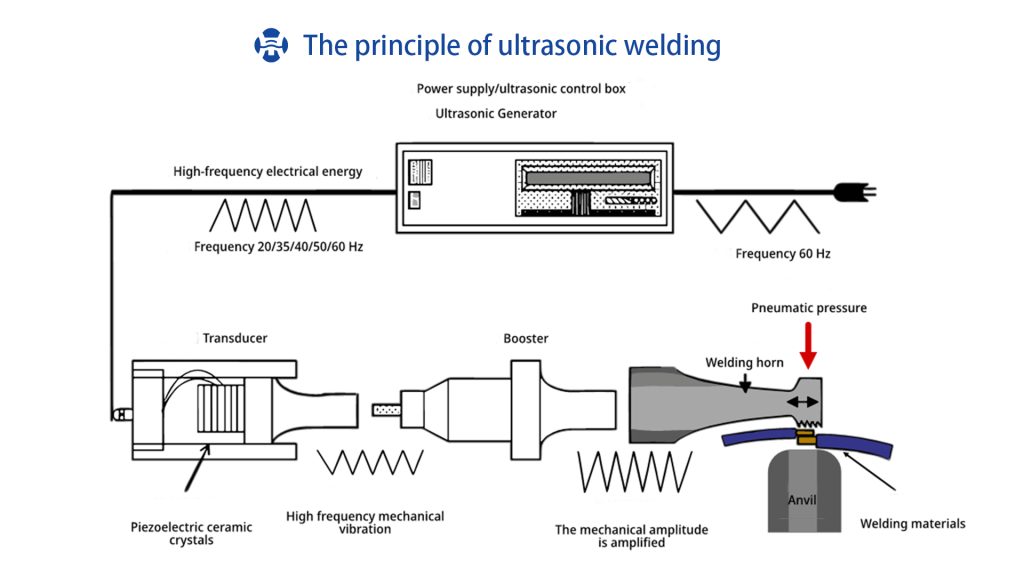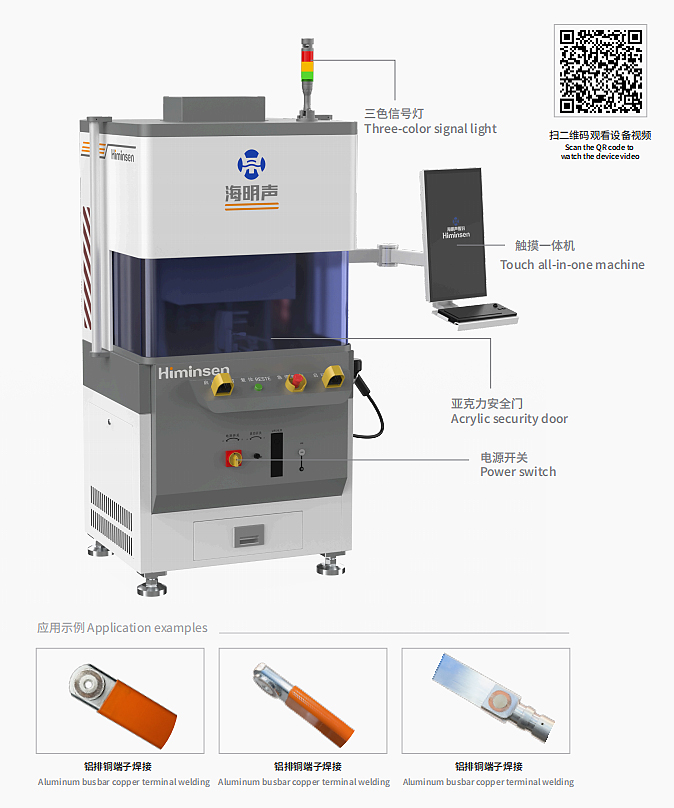1. Principle of ultrasonic metal welding

Ultrasonic metal welding is a special method for connecting the same kind of metal or different kinds of metals by using the mechanical vibration energy at ultrasonic frequency. When metal is welded by ultrasonic waves, neither electric current is transmitted to the workpiece nor high-temperature heat source is applied to the workpiece. Only under static pressure, mechanical energy is converted into internal energy, deformation energy and limited temperature rise. Solid-state welding occurs when the two base metals reach the recrystallization temperature. Therefore, it effectively overcomes the phenomena such as spatter and oxidation generated during resistance welding.
2. Advantages and Disadvantages of Ultrasonic Metal Welding
Fast and Efficient: Ultrasonic welding can be completed in a very short period of time and is suitable for environments that require rapid production. Energy – saving: Compared with traditional welding techniques, ultrasonic welding consumes less energy and is more energy – efficient and environmentally – friendly. High Fusion Strength: The strength of the joint after welding is close to or even exceeds that of the base material itself and can withstand relatively large external forces. Good Conductivity: The resistance coefficient of the joint after welding is extremely low or nearly zero, and the conductive performance is excellent. Environment – friendly and Safe: There is no spark generation during the welding process, which reduces the risk of fire. Moreover, there is no harmful substance emission, making it safer and healthier. No Need for Flux and Solder: There is no need to use flux, gas and solder during the welding process, which simplifies the welding process and reduces costs. Wide Range of Applications: It is applicable to a variety of metallic materials, including fine – wire or thin – sheet materials of non – ferrous metals such as aluminum, silver, brass, bronze, red copper, nickel, gold, platinum, etc.










0条评论